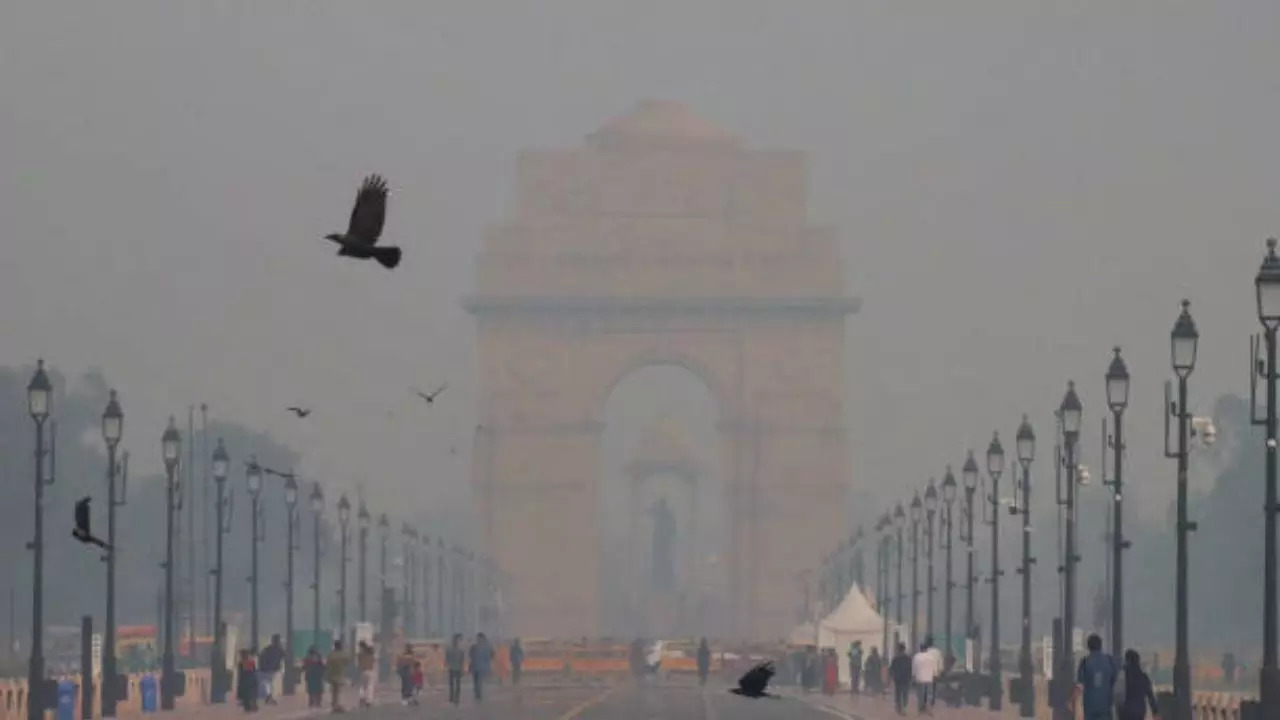Contents
-
news
-
Health
Delhi air pollution: Know how pollutants trigger asthma symptoms, ways to manage flare-ups
When AQI levels fall, people with asthma often have their symptoms worsen. The smallest particles (PM2.5) can penetrate deep into the lungs or even your blood. They can pass through your nose or mouth and enter your lungs and blood. This ultimately increases the symptoms of asthma. Read on to know how air pollutants trigger asthma symptoms and ways to manage asthma flare-ups.

Know how pollutants trigger asthma symptoms and ways to manage flare-ups
The air quality index (AQI) in Delhi fell to ‘very poor’ category on Monday. According to SAFAR, AQI was recorded above 300 in many areas of the capital. Due to poor AQI levels, visibility also reduced in many parts of Delhi. The Central Pollution Control Board (CPCB) said Anand Vihar recorded the worst air quality with a reading of 361.
The World Health Organization (WHO) describes air pollution as “the contamination of the indoor or outdoor environment by any chemical, physical or biological agent that modifies the natural characteristics of the atmosphere”. An AQI between zero and 50 is considered ‘good’, 51 to 100 ‘satisfactory’, 101 to 200 ‘moderate’, 201 to 300 ‘poor’, 301 to 400 ‘very poor’ and 401 Anything between 500 and 500 is considered ‘severe’.
When AQI levels fall, people with asthma often have their symptoms worsen. Asthma is a condition in which the airways swell and narrow. It can also cause excess mucus. This condition usually causes difficulty in breathing. It can also cause cough, difficulty breathing, and a whistling sound (wheezing) when you exhale.
The Mayo Clinic says that for some people, asthma is a minor problem. “For others, it can be a major problem that interferes with daily activities and can cause a life-threatening asthma attack.”
How does air pollution trigger asthma symptoms?
Small airborne particles called “particulate matter” or PM, found in smog, smoke, soot and airborne dust, can cause serious air quality problems. These smallest particles (PM2.5) can penetrate deep into the lungs or even your blood. They can pass through your nose or mouth and enter your lungs and blood. This ultimately increases the symptoms of asthma.
Air pollution also inflames and irritates the lining and receptors in a person’s airways. This causes the airways to harden and swell, which is a common symptom of asthma, worsening asthma symptoms.
Additionally, air pollution contains substances that are toxic to your respiratory tract. When you are exposed to these pollutants, it causes oxidative stress and increases asthma symptoms.
Therefore, it is important that you take necessary measures to manage asthma flare-ups when the air quality starts deteriorating. Here, take a look at some ways to manage asthma flare-ups.
Ways to manage asthma flare-ups when air pollution worsens
- Keep an eye on air quality: Use air quality index (AQI) apps or websites to stay informed about pollution levels. If the AQI is high, be sure to limit outdoor activities to reduce exposure.
- Stay indoors during peak pollution: Pollutants are generally higher during rush hour and afternoon. Stay indoors during these times and keep your windows and doors closed to prevent polluted air from entering.
- Use an air purifier: High-efficiency particulate air (HEPA) filters can help remove fine particles from indoor air. You can also use air purifiers, especially in bedrooms and living spaces.
- Wear a mask when going out: If you have to go out, wear an N95 or similar mask to filter out fine particles. These masks can help reduce the inhalation of harmful pollutants.
- Take medicines: Follow your asthma action plan and make sure you take long-term control medications. Keep an inhaler with you for immediate relief if symptoms increase.
- Stay hydrated: Drink plenty of water to stay hydrated and use a humidifier to keep indoor air moist, as dry air can irritate the airways.
- Avoid outdoor exercise: Strenuous physical activity increases your breathing rate, allowing more pollutants to enter your lungs. Opt for light indoor exercise instead.
Get the latest news live on Times Now with breaking news and top headlines from around the world.


